
The Game Boy Advance (GBA) is a 32-bit handheld game console developed, manufactured and marketed by Nintendo as the successor to the Game Boy Color. It was released in Japan on March 21, 2001, in North America on June 11, 2001, in the PAL region on June 22, 2001, and in mainland China as iQue Game Boy Advance on June 8, 2004.

Mario Kart: Super Circuit is a 2001 kart racing game for the Game Boy Advance (GBA). It is the third Mario Kart game and retains its predecessors' gameplay: as a Mario franchise character, the player races opponents around tracks based on locales from the Super Mario platform games. Tracks contain obstacles and power-ups that respectively hamper and aid the player's progress. Super Circuit includes various single-player and multiplayer game modes, including a Grand Prix racing mode and a last man standing battle mode.

Sonic Advance, known as SonicN on the N-Gage, is a 2001 platform game developed by Dimps and published by Sega for the Game Boy Advance. It was the first Sonic the Hedgehog game released on a Nintendo console with Sonic Adventure 2: Battle on the GameCube, and was produced in commemoration of the series' tenth anniversary. The story follows Sonic, Tails, Knuckles, and Amy as they journey to stop Doctor Eggman from taking over the world. Controlling a character, players are tasked with completing each level, defeating Eggman and his robot army, and collecting the seven Chaos Emeralds.

Wario Land 4 is a 2001 platform game developed by Nintendo and released for the Game Boy Advance. Wario has to gather four treasures to unlock a pyramid and save Princess Shokora from the Golden Diva.

Golden Sun: The Lost Age, released under different names in some regions, is a 2002 role-playing video game for the Game Boy Advance, developed by Camelot Software Planning and published by Nintendo. It is the second installment in the Golden Sun series and was released on June 28, 2002 in Japan, and in 2003 in North America and Europe.

The GameCube Game Boy Advance cable (DOL-011) is a video game accessory manufactured by Nintendo which is used to connect the Game Boy Advance (GBA) handheld console to the GameCube (GCN) home console. Depending on the games it is used with, the cable may facilitate transferring data between related games, unlocking additional content, or turning the GBA into a controller or second screen.
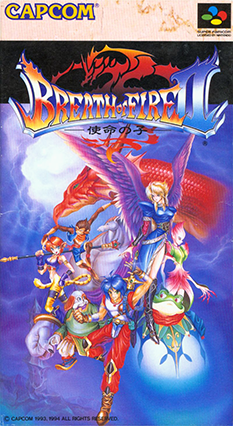
Breath of Fire II is a role-playing video game developed and published by Capcom. First released in 1994, the game was licensed to Laguna for European release in 1996. It is the second entry in the Breath of Fire series. It was later ported to Game Boy Advance and re-released worldwide. The game was released on Wii's Virtual Console in North America on August 27, 2007. Nintendo of Europe's website mistakenly announced it for release on July 27, 2007, but it was in fact released two weeks later, on August 10, 2007. In 2013, it was released for the Wii U Virtual Console. In 2016, it was released for the New Nintendo 3DS Virtual Console. In 2019, it was released for the Nintendo Switch SNES games library.

The Urbz: Sims in the City is a video game for the Game Boy Advance, GameCube, PlayStation 2, Xbox, and Nintendo DS. It is the third Sims game for video game consoles and is the second Sims game not to be released on Microsoft Windows, after a planned PC port and sequel were both cancelled due to mediocre sales. The next release for consoles and handhelds was the console port of The Sims 2.

Banjo-Kazooie: Grunty's Revenge is a 2003 platform game by Rare for Nintendo's Game Boy Advance (GBA). It is the third instalment in the Banjo-Kazooie series and takes place between the events of the Nintendo 64 (N64) games Banjo-Kazooie (1998) and Banjo-Tooie (2000). In Grunty's Revenge, the evil witch Gruntilda travels back in time to prevent the events of Banjo-Kazooie from happening, and the bear Banjo and his bird friend Kazooie set out to stop her. Grunty's Revenge retains the focus on collecting items and most of the other game mechanics from its predecessors, but is presented in 2D rather than 3D. Aside from the main game, players can also access minigames such as fishing and target shooting.

It's Mr. Pants is a puzzle video game developed by Rare. It was published by THQ for the Game Boy Advance (GBA) handheld game console in North America and Europe in 2004–2005. A port of the game for mobile phones was developed and published internationally by In-Fusio in 2005–2006. The game stars Mr. Pants, a crudely drawn mascot formerly featured on Rare's website who had made cameo appearances in several prior Rare games.

Mario Golf: Advance Tour is a role-playing video game-styled sports game developed by Camelot Software Planning and published by Nintendo for the Game Boy Advance in 2004. The game is the sequel to the Game Boy Color version of Mario Golf and the Game Boy Advance counterpart of Mario Golf: Toadstool Tour.

Mario Tennis: Power Tour, known as Mario Power Tennis in Europe, is a 2005 sports game developed by Camelot Software Planning and published by Nintendo for the Game Boy Advance. It is the sequel to the Game Boy Color version of Mario Tennis. While it is the handheld companion to Mario Power Tennis, released on GameCube, with the European release sharing its title, Power Tour lacks connectivity with Power Tennis, unlike how its predecessor features connectivity with its console counterpart on Nintendo 64. Power Tour was re-released on the Wii U's Virtual Console in 2014.
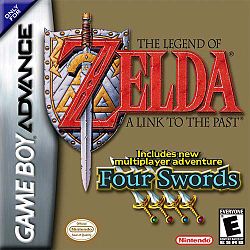
The Legend of Zelda: A Link to the Past and Four Swords is a compilation of two action-adventure games co-developed by Nintendo R&D2 and Capcom and published by Nintendo for the Game Boy Advance. The game was released in December 2002 in North America and in March 2003 in Japan and Europe. The cartridge contains a modified port of A Link to the Past, originally released for the Super Nintendo Entertainment System in 1991, and an original multiplayer-only game titled Four Swords, which serves as the 9th installment in The Legend of Zelda series.
This is a list of video game accessories that have been released for the Game Boy handheld console and its successors. Accessories add functionality that the console would otherwise not have.
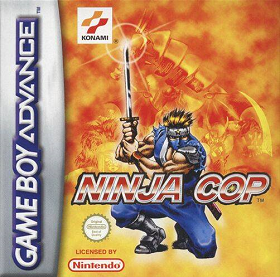
Ninja Five-O, known in the PAL region as Ninja Cop, is an action platform video game developed by Hudson Soft and published by Konami. It was released for the Game Boy Advance in North America and Europe in April 2003. Players take the role of Joe Osugi, a ninja who must stop a terrorist group influenced by mystical masks. It was first announced at "Konami Gamers' Day" in early 2003.

Star X is a rail shooter video game developed by Graphic State and published by BAM! Entertainment for the Game Boy Advance handheld video game console. It was first released in North America on April 15, 2002, and later was released in the PAL regions on May 17, 2002.
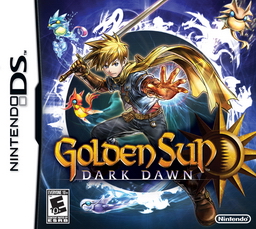
Golden Sun: Dark Dawn is a role-playing video game developed by Camelot Software Planning and published by Nintendo for the Nintendo DS. The third entry in the Golden Sun series, Dark Dawn was released in late 2010, becoming the fifth-best selling game during its release window in Japan.
Golden Sun is a series of fantasy role-playing video games developed by Camelot Software Planning and published by Nintendo. It follows the story of a group of magically-attuned "adepts" who are charged with preventing the potentially destructive power of alchemy from being released as it was in the past. Players navigate characters through the game's world by defeating enemies, solving puzzles, and completing assigned missions to complete the storyline.
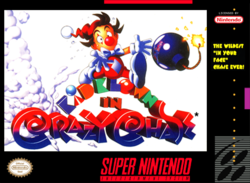
Kid Klown in Crazy Chase is a platform video game developed and published by Kemco for the Super Nintendo Entertainment System. It was released in North America in September 1994, Japan on October 21, 1994 and in Europe in 1995. The game features the Kid Klown, the player character who is tasked with rescuing the Princess Honey from the villain Black Jack. Players view gameplay from an isometric perspective as Kid Klown pursues a lit fuse in order to stop it from reaching a spade bomb. The game was re-released for the Game Boy Advance as Crazy Chase and features 11 new levels, four mini-games, and a multi-player mode. The re-release was released in Europe and North America in October 2002, while a release in Japan was planned but ultimately canceled. It was met with mixed reception from critics, who found it to be inferior to other games of its type. The game has a Japan-exclusive sequel Kid Klown in Crazy Chase 2: Love Love Hani Soudatsusen released for the Sony PlayStation in 1996.

Banjo-Pilot is a 2005 kart racing video game for the Game Boy Advance (GBA) and the fourth instalment in Rare's Banjo-Kazooie series. It plays similarly to the Mario Kart series by Nintendo: the player races one of nine playable characters around tracks, attacking other racers with bullets and collecting power-ups. The game features a number of single-player and multiplayer modes, such as time attack and item hunts. Unlike other kart racing games, characters control airplanes instead of go-karts.





















